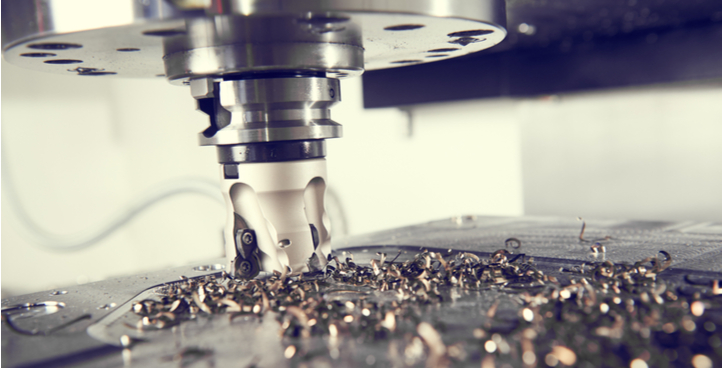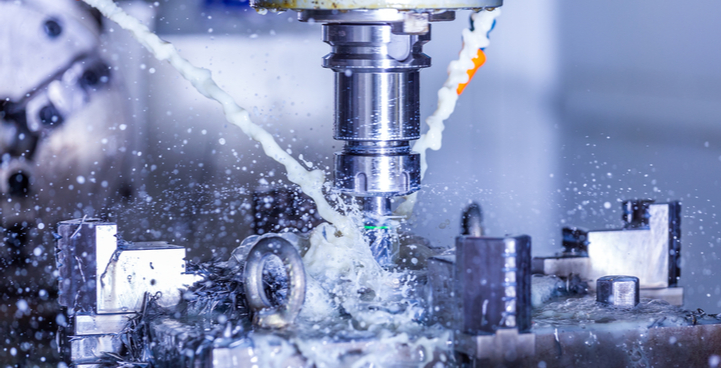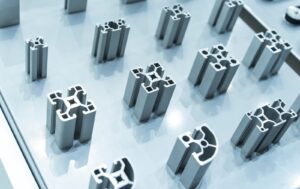Horizontal and vertical milling machines may look very similar and they work very similarly too in many cases, but there are also key differences that affect your decision of which to choose. The primary difference between them is in the cutting heads and how the spindle axis moves — whether it’s from side to side or up and down.
Both vertical and horizontal milling machines have their advantages and you can use either one for your project-related tasks, as long as you know the correct operating techniques or add-on parts required. Knowing the difference between these two types of milling processes will help you determine which type is best for your project. Contact our team at 573-646-3996 if you have any questions about CNC milling!
What is Vertical Milling?
Vertical milling is a process using a milling machine that has a vertically-aligned cutting head and spindle. This spindle moves up and down along the z-axis, all while pressing against the workpiece to remove material. The rest of the machine moves along the Y-axis and X-axis to continuously position the object for cutting.
There are two types of vertical mills that can control movement in different ways:
- Bed mills – the spindle can be either raised or lowered along with a bed that moves horizontally and perpendicularly to the spindle. Bed mills are ideal to machine heavy products because the bed doesn’t have to be moved vertically in order to reach the spindle.
- Turret mills – the spindle is stationary while the bed moves both horizontally and vertically in order to move the material around the spindle. Turret mills are ideal because they are more versatile, smaller, and more flexible.
What is Horizontal Milling?
Horizontal milling is a process using a milling machine that has a horizontally-aligned cutting head and spindle. Instead of a fixed spindle rotating vertically like with their vertical milling counterparts, horizontal milling cutters are mounted on an arm above the table called the arbor, meaning material can be fed from three axes.
While vertical machines usually have thin and long cutting tools, horizontal machines have thicker and shorter cutting tools in order to perform heavier, deeper cuts. Unlike vertical milling, you don’t have a direct line of visibility while the machine cuts.
Vertical Milling vs. Horizontal Milling: Which Should You Choose?
So which style of milling machine should you choose? It is not a matter of which is better because there are advantages and disadvantages to each; it all depends on what you are using them for.
The choice between the two often comes down to these considerations:
- The design of the workpiece
- The weight, size, and shape of the pieces to be milled
- The number of planes to be milled
- Your operating budget
- The timeline you are working with
The machine you decide to use doesn’t necessarily limit the types of projects you can complete. Many items can be worked on either type of milling machine, and a skilled machinist may often be able to accomplish the same task by adjusting the technique. Some generalizations can be made about each. Here is a quick list detailing which milling operation is best suited for the project based on your needs.
Horizontal mills are suitable for projects with these needs:
- Groove cutting
- Slot cutting
- Gear cutting
- Side-oriented detail work
- Workpiece is heavier
- Workpiece has multiple sides that require cutting
- Workpiece has bulky materials or tough metal
Vertical mills are suitable for projects with these needs:
- Sinking dies
- Plung cuts
- Drilling cuts
- Single-side projects
- The detail work requires a lot of visibility
CNC Milling Services in Missouri
As you’ve learned, both types of milling machines have their merits, but the fact remains: both are integral parts of every machine shop, from a hobbyist’s garage to a heavy-equipment production floor. Plus, with the introduction of CNC milling centers, even complex jobs are accomplishable.
Roberson Machine Company specializes in CNC milling of aluminum, steel, stainless steel, plastics, and common metals (brass, bronze, etc.). When you choose us, you can rest assured that your parts will be manufactured to your exact specifications in a timely manner. Contact our team at 573-646-3996 or request a quote today for more information on our Missouri CNC milling services.





